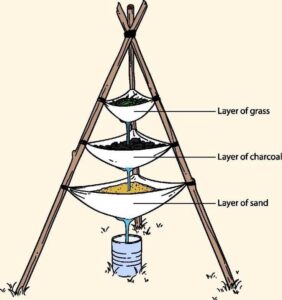In the bustling urban landscape of Singapore, efforts are being made to create harmonious coexistence between humans and wildlife. One remarkable example is the eco bridge, a unique infrastructure designed to facilitate the safe passage of animals over busy roads. In this article, we explore the eco bridge in Singapore and its vital role in protecting wildlife and preserving biodiversity.

1. Preserving Natural Connectivity
The Need for Wildlife Crossing
As urban development expands, wildlife habitats become fragmented, posing challenges for animal movement and migration. Roads act as barriers, obstructing the natural pathways of animals and increasing the risk of collisions. The eco bridge in Singapore addresses this issue by providing a safe passage for animals, allowing them to cross over roads seamlessly.
Designing an Eco Bridge
The eco bridge is carefully designed to blend into the surrounding natural landscape. It typically consists of a green corridor elevated above the road, adorned with vegetation, trees, and native plants. The bridge mimics the animals’ natural habitat and serves as a crucial link for their movement.
2. Facilitating Wildlife Movement
Creating Safe Pathways
The primary purpose of the eco bridge is to create safe pathways for animals to traverse. It enables them to move freely between fragmented habitats, ensuring their access to food sources, mating opportunities, and territories. By reducing the risks associated with road crossings, the eco bridge helps maintain healthy populations and genetic diversity.
Targeting Specific Species
The design of eco bridges often takes into consideration the specific needs of the local wildlife. It may include features such as vegetation corridors, water sources, and natural shelters to attract and facilitate the movement of particular species. These targeted provisions enhance the effectiveness of the bridge in supporting diverse wildlife populations.
3. Conservation and Ecological Benefits
Promoting Biodiversity
The eco bridge plays a vital role in conserving biodiversity by allowing animals to navigate their natural habitats without disruption. It prevents habitat fragmentation, enabling species to access resources, find mates, and establish territories. This, in turn, contributes to the overall health and stability of ecosystems.
Mitigating Human-Wildlife Conflicts
By providing a safe passage for animals, the eco bridge helps reduce conflicts between wildlife and human activities. It minimizes the risk of road accidents and property damage caused by wildlife attempting to cross roads. The bridge promotes coexistence, fostering a balance between urban development and the preservation of natural habitats.
The eco bridge in Singapore stands as a testament to the commitment of preserving wildlife and their natural habitats in an urban environment. By creating safe passages for animals to cross over roads, it promotes connectivity, protects biodiversity, and mitigates conflicts between humans and wildlife. This innovative infrastructure serves as an inspiring example for cities worldwide, demonstrating that harmonious coexistence between humans and nature is both achievable and essential. Let us celebrate the eco bridge as a symbol of progress in conservation efforts, and continue to support initiatives that prioritize the well-being of our wildlife companions.
As an Amazon Associate we earn from qualifying purchases through some links in our articles.



